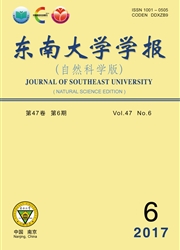

 中文摘要:
中文摘要:
为了解决现有的数据采集算法在高速采集的情况下存在占用CPU资源过多的问题,在对传统采集方式的优缺点进行比较的基础上,通过模拟数据采集实验获得大量的关于数据采集通信延迟时间的数据,对这些数据进行可视化分析,求解其最大值、最小值、平均值和方差,得到通信时间概率密度,并给出了数据采集的动态延迟特性.在此基础上,提出了更加稳定高效的数据采集算法.从理论分析和试验验证2方面对算法的性能进行分析比较,结果表明:该算法在保证采集效率的同时,大幅度降低了CPU的使用率,有效地减少了能量的消耗,大幅度提升传感器网络的生存周期.
 英文摘要:
英文摘要:
In order to solve the problem that the current acquisition algorithm occupies more central processing unit (CPU) resources under the circumstance of high-speed acquisition, on the basis of comparing the advantages and disadvantages of traditional acquisition methods, a great deal of data about the communication delay in data collection are obtained by means of the experiments in simula- ting data acquisition. By analyzing the visualization data and solving the variance and the maximum, minimum, and average values of the data, the probability density of the communicating time is ob- tained and the dynamic delay characteristics of data collection are given. And on this basis, a data collection algorithm is proposed, which is more stable and more efficient. The algorithm perform- ance in terms of theoretical analysis and experimental verification are compared and analyzed. The results show that the proposed algorithm can greatly reduce the usage of the CPU and the energy con- sumption, and, meanwhile, assure collection efficiency, thus greatly improving the life cycle of sen- sor networks.
 同期刊论文项目
同期刊论文项目
 同项目期刊论文
同项目期刊论文
 期刊信息
期刊信息
